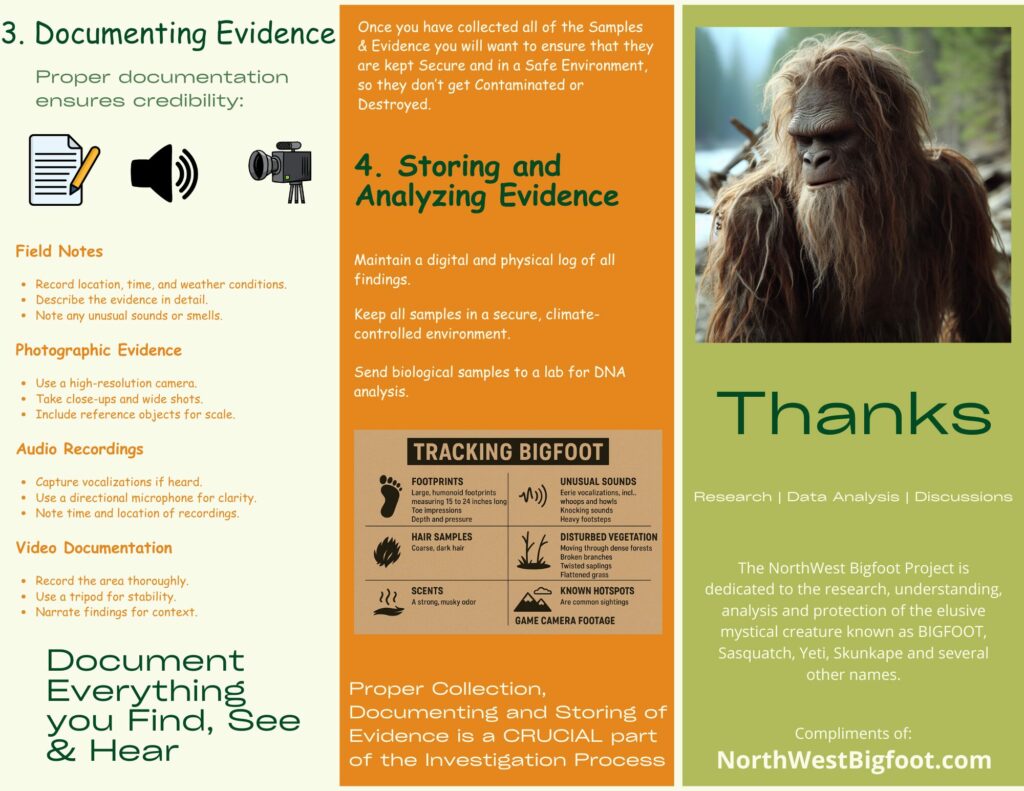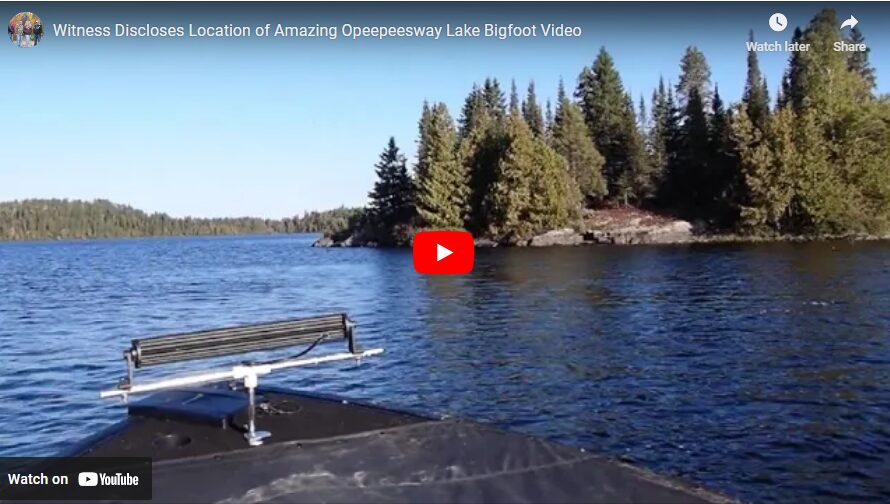
If you’re serious about tracking Bigfoot, you’ll want to follow a systematic approach to collecting and preserving evidence. Here’s a detailed procedure to ensure your findings are properly documented:
1. Collecting Samples (Hair, Scat, Tissue)
If you find potential biological evidence, follow these steps:
Hair Samples
- Use tweezers to carefully pick up the hair.
- Place in a sterile container (a small plastic bag or test tube).
- Avoid contamination by wearing gloves and using clean tools.
- Label the sample with location, date, and time.
- Store in a cool, dry place until analysis.
Scat (Feces) Samples
- Use a sterile spoon or spatula to collect a portion.
- Place in an airtight container (preferably a specimen jar).
- Seal and label with location, date, and time.
- Store in a refrigerated environment to prevent decomposition.
Tissue or Skin Samples
- Use gloves to handle any found tissue.
- Place in a sterile bag and seal tightly.
- Label with details of the find.
- Freeze the sample to preserve DNA integrity.
2. Preserving Footprints
If you discover a footprint, follow these steps to cast and document it:
Casting the Footprint
- Clear debris from the print without disturbing its shape.
- Spray with a light mist of water to prevent crumbling.
- Mix plaster of Paris (or dental stone) with water until it reaches a pancake-batter consistency.
- Pour gently into the footprint, starting from the edges.
- Let it set for at least 30 minutes.
- Carefully remove the cast and let it dry completely.
- Label and store in a protective case.
Photographing the Footprint
- Use a ruler for scale.
- Take multiple angles (top-down, side view).
- Include surrounding terrain for context.
- Use good lighting to capture details.
3. Documenting Evidence
Proper documentation ensures credibility:
Field Notes
- Record location, time, and weather conditions.
- Describe the evidence in detail.
- Note any unusual sounds or smells.
Photographic Evidence
- Use a high-resolution camera.
- Take close-ups and wide shots.
- Include reference objects for scale.
Audio Recordings
- Capture vocalizations if heard.
- Use a directional microphone for clarity.
- Note time and location of recordings.
Video Documentation
- Record the area thoroughly.
- Use a tripod for stability.
- Narrate findings for context.
4. Storing and Analyzing Evidence
Maintain a digital and physical log of all findings.
Keep all samples in a secure, climate-controlled environment.
Send biological samples to a lab for DNA analysis.
Here is a nice Reference Field Guide you can use when in the field gathering Bigfoot Evidence:


We have provided a nice PDF version of our Evidence Collection Field Guide – DOWNLOAD it here
Sponsored Products
Your support Helps us pay for this site and conduct Analysis Research, everything helps… besides, you get Cool Bigfoot STUFF…






